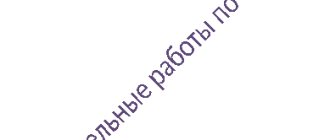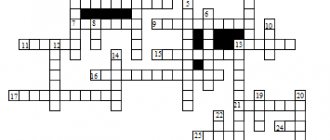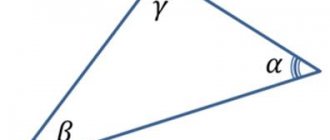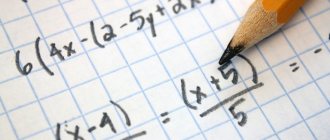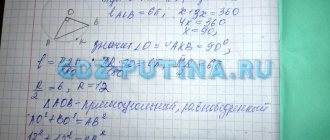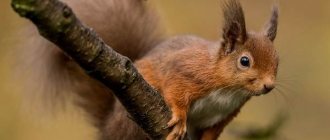Test No. 1 (1st quarter). "Initial geometric information"
Option I
1. Two points L and M are marked on the segment KN. Find the length of the segment LM if it is known that KN = 12 cm, MN = 3.5 cm, KL = 4.6 cm. Indicate which point lies on the segment KM?
2. In the given figure OM is the bisector of angle NOL. — Find the angle KON if the angle NOM is 60°. — Construct the angle KOP, which will be the vertical LOM. Calculate its degree measure. — How many degrees will the LOP angle be?
3. Angle COD is 135°. Rays OE and OF, the angle is divided into 3 equal angles. How many right angles did you get?
Option II
1. Two points L and N are marked on the segment KM. Find the length of the segment LN if it is known that KM = 8.6 cm, NM = 1.5 cm, KL = 2.6 cm. Indicate which point lies on the segment KN ?
2. In a given figure, OB is the bisector of angle AOC. — Find angle DOA if angle AOB is 70°. — Construct the angle DOE, which will be the vertical COB. Calculate its degree measure. — How many degrees will there be in DOE coal?
3. The EOF angle is 120°. Rays OA and OB, the angle is divided into 4 equal angles. How many 60° angles did you get?
Option III
1. Two points N and M are marked on the segment LK. Find the length of the segment NM if it is known that LK = 13.8 cm, LN = 4.5 cm, MK = 1.6 cm. Indicate which point lies on the segment NK ?
2. In a given figure, OG is the bisector of angle FOH. — Find the angle EOF if the angle FOG is 30°. — Construct the angle EOI, which will be the vertical GOH. Calculate its degree measure. — How many degrees will the EOI angle be?
3. Angle BOD is 140°. The angle is divided into 4 equal angles by rays OA, OC and OE. How many 70° angles did you get?
Test No. 1 on the topic “Initial geometric information”
Test No. 1 on the topic
"Initial geometric information"
Geometry 7th grade
Option I
1. Three points B
,
C
and
D
lie on the same straight line.
It is known that ВD
= 17 cm,
DC
= 25 cm. What can be the length of the segment
ВС
?
2. Sum of vertical angles MOE
and
DOC
, formed at the intersection of straight lines
MC
and
DE
, is equal to 204°.
Find the angle MOD
.
3. Using a protractor, draw an angle equal to 78° and draw the bisector of the angle adjacent to it.
Test No. 1 on the topic
"Initial geometric information"
Geometry 7th grade
Option
II
1. Three points M
,
N
and
K
lie on the same straight line.
It is known that MN
= 15 cm,
NK
= 18 cm. What could be the distance
MK
?
2. Sum of vertical angles AOB
and
COD
formed at the intersection of straight lines
AD
and
BC
is equal to 108°.
Find the angle BOD
.
3. Using a protractor, draw an angle equal to 132° and draw the bisector of one of the adjacent angles.
Test No. 1 on the topic
"Initial geometric information"
Geometry 7th grade
Option
II
3. Three points M
,
N
and
K
lie on the same straight line.
It is known that MN
= 15 cm,
NK
= 18 cm. What could be the distance
MK
?
4. Sum of vertical angles AOB
and
COD
formed at the intersection of straight lines
AD
and
BC
is equal to 108°.
Find the angle BOD
.
3. Using a protractor, draw an angle equal to 132° and draw the bisector of one of the adjacent angles.
Test No. 2 on the topic “Triangles”
Geometry 7th grade
Option I
1. Given by: JSC
=
VO
,
CO
=
DO
,
CO
= 5 cm,
BO
= 3 cm,
BD
= 4 cm
(Fig. 1)
.
Find:
perimeter ∆
CAO
.
Rice. 1
2. In an isosceles triangle ABC
points
K
and
M
are the midpoints of the lateral sides
AB
and
BC
, respectively.
BD
is the median of the triangle.
Prove that ∆ BKD
= ∆
BMD
.
3. Given an undeveloped angle and a segment. On the sides of a given angle, construct points distant from the vertex of the angle at a distance equal to half of the given segment.
4*. Direct MK
splits the plane into two half-planes.
Equal segments
MA
and
KB from points M and
K
, and Ð
AMK
= Ð
BKM
. Which of the statements are true?
a) ∆AMV
= ∆
AKB
;
b) Ð AKM
= Ð
BMK
;
c) ∆ MKA
= ∆
KMV
;
d) Ð AMB
= Ð
KMB
.
Test No. 2 on the topic “Triangles”
Geometry 7th grade
Option
II
1. Given: AB
=
CD
,
BC
=
AD
,
AC
= 1 cm,
AD
= 6 cm,
AB
= 4 cm
(Fig. 2)
.
Find:
perimeter ∆
ADC
.
Rice. 2
2. In an isosceles triangle ABC
points
K
and
M
are the midpoints of the lateral sides
AB
and
BC
, respectively.
BD
is the median of the triangle.
Prove that ∆ AKD
= ∆
CMD
.
3. Given an undeveloped angle and a segment. On the bisector of a given angle, construct a point distant from the vertex of the angle at a distance equal to the given segment.
4*. Direct AB
splits the plane into two half-planes.
Equal segments
AD
and
BC
from points A
and
B , with Ð
BAD
= Ð
ABC
. Which of the statements are true?
a) ∆CAD
= ∆
BDA
;
b) Ð DBA
= Ð
CAB
;
c) Ð BAD
= Ð
BAC
;
d) Ð ADB
= Ð
BCA
.
Test No. 3 on the topic “Parallel lines”
Geometry 7th grade
Option I
1. Given: a
||
b
,
c
– secant, Ð1 + Ð2 = 102°.
Find:
all the formed corners.
2. Given:
Ðl = Ð2, Ð3 = 120°.
Find:
Ð4.
3. Segment AD
is the bisector of triangle
ABC
.
through point D
, parallel to side
AB
and intersecting side
AC
at
point
F. Find the angles of triangle ADF
if Ð
BAC
= 72°.
4*. Direct EK
is a secant for lines
CD
and
MN
(
E
О
CD
,
K
О
MN
).
Ð DEK
is equal to 65°.
At what value of angle NKE
straight lines
CD
and
MN
be parallel?
Test No. 3 on the topic “Parallel lines”
Geometry 7th grade
Option
II
1. Given: a
||
b
,
с
– secant, Ð1 – Ð2 = 102°.
Find:
all the formed corners.
2. Given:
Ð1 = Ð2, Ð3 = 140°.
Find:
Ð4.
3. Section AK
– bisector of triangle
CAE
.
through point K
, parallel to side
CA
and intersecting side
AE
at
point
N. Find the angles of triangle AKN
if Ð
CAE
= 78°.
4*. Direct MN
is a secant for straight lines
AB
and
CD
(
M
Î
AB
,
N
Î
CD
).
Angle AMN
is 75°.
At what value of angle CNM
straight lines
AB
and
CD
be parallel?
Test No. 4 on the topic
“Relationships between the sides and angles of a triangle.”
Option I
Geometry grade 7
1. In Figure 1 Ð AVE
= 104°, Ð
DСF
= 76°,
AC
= 12 cm. Find side
AB
of triangle
ABC
.
Rice. 1
2. In triangle CDE
point
M
lies on the side
CE
, and Ð
CMD
is sharp.
Prove that DE
>
DM
.
3. The perimeter of an isosceles obtuse triangle is 45 cm, and one of its sides is 9 cm larger than the other. Find the sides of the triangle.
Test No. 4 on the topic
“Relationships between the sides and angles of a triangle.”
Option
II Geometry grade 7
1. In Figure 2 Ð BAE
= 112°, Р
DBF
= 68°,
ВС
= 9 cm. Find side
AC
of triangle
ABC
.
Rice. 2
2. In triangle MNP
point
K
lies on the side
MN,
and р
NKP
is sharp.
Prove that KP
<
MR
.
3. One of the sides of an obtuse isosceles triangle is 17 cm smaller than the other. Find the sides of this triangle if its perimeter is 77 cm.
Test No. 4 on the topic
“Relationships between the sides and angles of a triangle.”
Option
II Geometry grade 7
1. In Figure 2 Ð BAE
= 112°, Р
DBF
= 68°,
ВС
= 9 cm. Find side
AC
of triangle
ABC
.
Rice. 2
2. In triangle MNP
point
K
lies on the side
MN,
and р
NKP
is sharp.
Prove that KP
<
MR
.
3. One of the sides of an obtuse isosceles triangle is 17 cm smaller than the other. Find the sides of this triangle if its perimeter is 77 cm.
Test No.
5 on the topic “Right triangles”
Option
I
1. Given:
Ð
BAD
= Ð
BCD
= 90°, Ð
ADB
= 15°, Ð
BDC
= 75°.
Prove: AD
||
Sun
.
Rice. 1
2. In triangle ABC
Ð
C
= 60°, Ð
B
= 90°.
The height of BB
1 is 2 cm. Find
AB
.
3. Construct an isosceles triangle using the base and the altitude drawn to it from the vertex of the triangle.
4*. Using a compass and ruler, construct an angle equal to 150°.
Test No.
5 on the topic “Right triangles”
Option
II
1. Given:
Ð
AOD
= 90°, Ð
OAD
= 70°, Ð
OSV
= 20°.
Prove: AD
||
Sun
.
Rice. 2
2. In triangle ABC
Ð
C
= 90°,
СС
1 – height,
СС
1 = 5 cm,
ВС
= 10 cm. Find Р
CAB
.
3. Construct an isosceles triangle using the base and the median drawn to it from the vertex of the triangle.
4*. Using a compass and ruler, construct an angle equal to 120°
Test No.
5 on the topic “Right triangles”
Option
I
1. Given:
Ð
BAD
= Ð
BCD
= 90°, Ð
ADB
= 15°, Ð
BDC
= 75°.
Prove: AD
||
Sun
.
Rice. 1
2. In triangle ABC
Ð
C
= 60°, Ð
B
= 90°.
The height of BB
1 is 2 cm. Find
AB
.
3. Construct an isosceles triangle using the base and the altitude drawn to it from the vertex of the triangle.
4*. Using a compass and ruler, construct an angle equal to 150°.
Test No. 2 (2nd quarter). "Triangle and Circle"
Option I
1. An isosceles triangle ABC is given. It is known that angle ABE is equal to angle CBD. Prove that triangle DBE is an isosceles triangle. Find angle AEB if angle BDE is known to be 65°.
2. Given a segment AB equal to 4 cm and a right angle. Construct a point on the bisector of the angle where the distance from the vertex of the angle to the point is equal to the length of the segment.
3. Given a circle with center O and chord CD. The radius OE is drawn perpendicular to the chord CD. Prove that the chords CE and DE are equal.
Option II
1. An isosceles triangle MNP is given. It is known that the angle MND is equal to the angle ENP. Prove that triangle DNE is an isosceles triangle. Find angle MDN if angle MEN is known to be 70°.
2. Given a segment AB equal to 3 cm and an acute angle. Construct a point on the bisector of the angle where the distance from the vertex of the angle to the point is equal to twice the length of the segment.
3. Given a circle with center O and chord EF. The radius OD is drawn perpendicular to the chord EF. Prove that the chords DE and DF are equal.
Option III
1. An isosceles triangle XYZ is given. It is known that angle XYD is equal to angle ZYE. Prove that triangle DYE is an isosceles triangle. Find angle XDY if angle XEY is known to be 50°.
2. Given a segment AB equal to 4 cm and an angle equal to 50°. Construct a point on the bisector of the angle where the distance from the vertex of the angle to the point is equal to half the length of the segment.
3. Given a circle with center O and chord LM. The radius OK is drawn perpendicular to the chord LM. Prove that the chords LK and MK are equal.
Final test in geometry, grade 7
Explanatory note
The final test on geometry in grade 7, compiled in 2 versions, consists of 3 parts. Contains assignments for the 7th grade geometry course.
The work is designed for 1 lesson.
Option 1
Part 1
A1
There are 4 points marked on line a. How many different segments did you get on the straight line?
1) 3 ; 2) 4 ; 3) 5; 4) 6.
A2
What geometric shapes does an angle consist of?
1) points and one corner; 3) a point and two rays emanating from this point;
2) a point and two rays; 4) there is no correct answer.
A3
Find adjacent angles if one is less than the other by 30°
1) 100° and 80°; 2) 75° and 105°; 3) 30° and 60°; 4) 150° and 30°.
A4
The angles of triangle ABC are in the ratio 4 : 3 : 2. Calculate the largest angle of this triangle.
1) 140°;
2) 130°; 3) 100°; 4) 80°. A5
In an isosceles triangle, the base angle is 45°. Find the angle between the sides. Give your answer in degrees.
1) 90°; 2) 45°; 3) 180°; 4) 80°.
A6
Choose the correct statement. If two parallel lines are intersected by a transversal, then
1) crossed angles are equal; 3) adjacent angles are equal;
2) the corresponding angles add up to 180°; 4) one-sided angles are equal.
Part 2
IN 1
In triangle ABC, segment AD is a bisector, angle C is 50°, and angle CAD is 30°. Find angle B.
Answer ___________________
AT 2
In triangle ABC AC = BC, angle C is 50° Find the exterior angle CBD.
Answer ______________________________________________________
Part 3
A task with a detailed answer.
C1
Solve the problem.
Formalize your decision. Prove the equality of AMO and MVK
Option 2
Part 1
A1
How many lines can be drawn through points A and B?
1) 31;
2) none;
3) 2;
4) only one.
A2
An angle is said to be developed if
1) its sides coincide; 3) its sides do not lie on the same straight line;
2) its value is greater than 90°; 4) both of its sides lie on the same straight line.
A3
One of the adjacent angles is 48° larger than the other. Find the smaller angle.
1) 48 °; 2) 66 °; 3) 78 °; 4) 84°.
A4
The angles of triangle ABC are in the ratio 5:3:1. Calculate the largest angle of this triangle.
1) 130 °; 2) 140 °; 3) 100 °; 4) 80 °.
A5
In an isosceles triangle, the angle between the sides is 60°.
Find the angle at the base. Give your answer in degrees. 1) 60°;
2) 120°; 3) 180°; 4) 30°. A6
Choose the correct statement. If two parallel lines are intersected by a transversal, then
1) crossed angles add up to 180°; 3) adjacent angles are equal;
2) corresponding angles are equal; 4) one-sided angles are equal.
Part 2
B1
In triangle ABC AD is the bisector, angle C is 30°, angle BAD is 22°. Find angle ADB. Give your answer in degrees
Answer ________________________________________
AT 2
In triangle ABC, angle A is 40° and the exterior angle at vertex B is 102°. Find angle C. Give your answer in degrees
Answer: ____________________________________
Part 3
A task with a detailed answer.
C1
Solve the problem. Write down your solution.
Prove the equality of the shaded triangles.
final test, geometry, grade 7 DOC / 109 Kb
Test No. 3 (3rd quarter). "Parallel lines"
Option I
1. In this figure, angle 1 is 120°, angle 2 is 110°, angle 3 is 65#176;. Find what angle 4 is equal to and how many other such angles are there in the picture?
2. An acute angle is specified. On one of the sides, 2 points K and L are marked. From these points, perpendicular straight lines are drawn to the other side of the angle, KM and LN, respectively. Prove that these lines are parallel to each other. What is angle KLN if angle MKL is 120°?
3. Triangle XYZ is given. On its two sides XY and YZ, points A and B are indicated, respectively. Prove that if angle YAB is equal to angle YXZ, then angle ABY is equal to angle XZY.
Option II
1. In this figure, angle 1 is 65°, angle 2 is 105°, and angle 3 is 65°. Find what angle 4 is equal to and how many other such angles are there in the picture?
2. An acute angle is specified. On one of the sides, 2 points C and D are marked. From these points, perpendicular straight lines are drawn to the other side of the angle, CE and DF, respectively. Prove that these lines are parallel to each other. What is angle CDF if angle ECD is 135°?
3. Triangle MNL is given. On its two sides MN and NL, points A and B are indicated, respectively. Prove that if angle NAB is equal to angle NML, then angle ABN is equal to angle MNL.
Option III
1. In this figure, angle 1 is 80°, angle 2 is 110°, and angle 3 is 80°. Find what angle 4 is equal to and how many other such angles are there in the picture?
2. An acute angle is specified. On one of the sides, 2 points E and F are marked. From these points, perpendicular straight lines are drawn to the other side of the angle, EG and FI, respectively. Prove that these lines are parallel to each other. What is angle EFI if angle GEF is 105°?
3. Triangle DEF is given. On its two sides DE and EF, points A and B are indicated, respectively. Prove that if angle EAB is equal to angle EDF, then angle ABE is equal to angle DFE.
